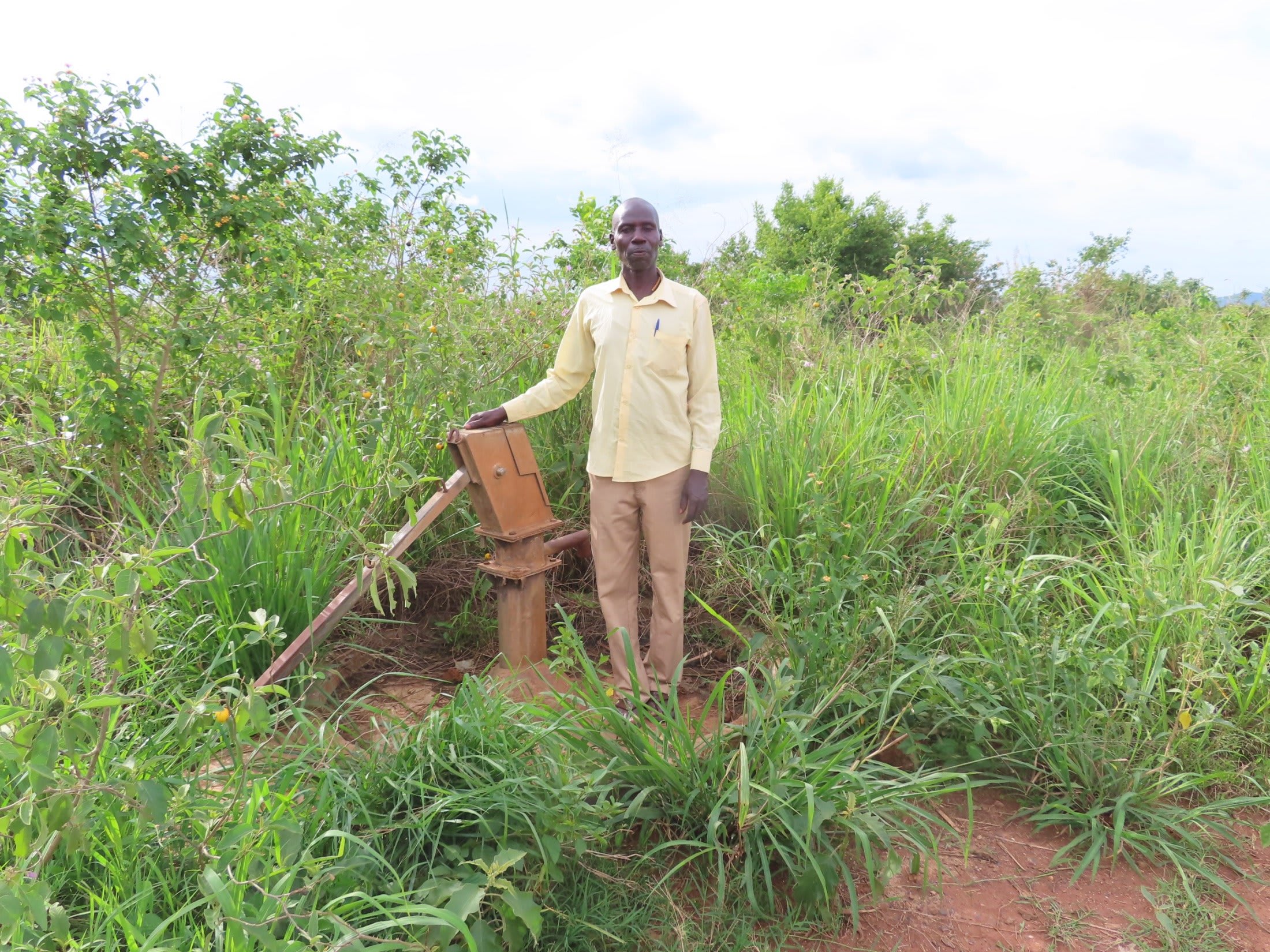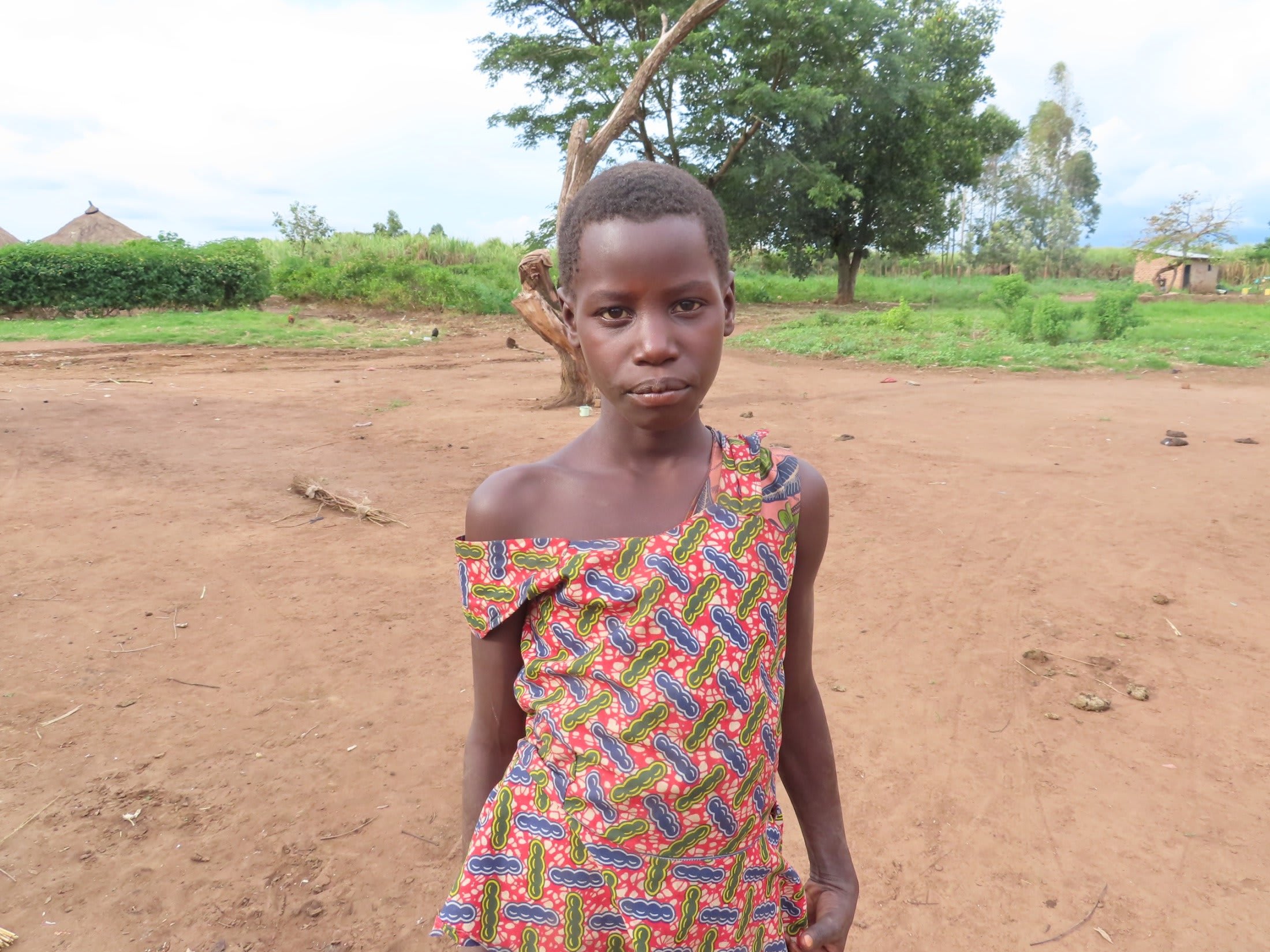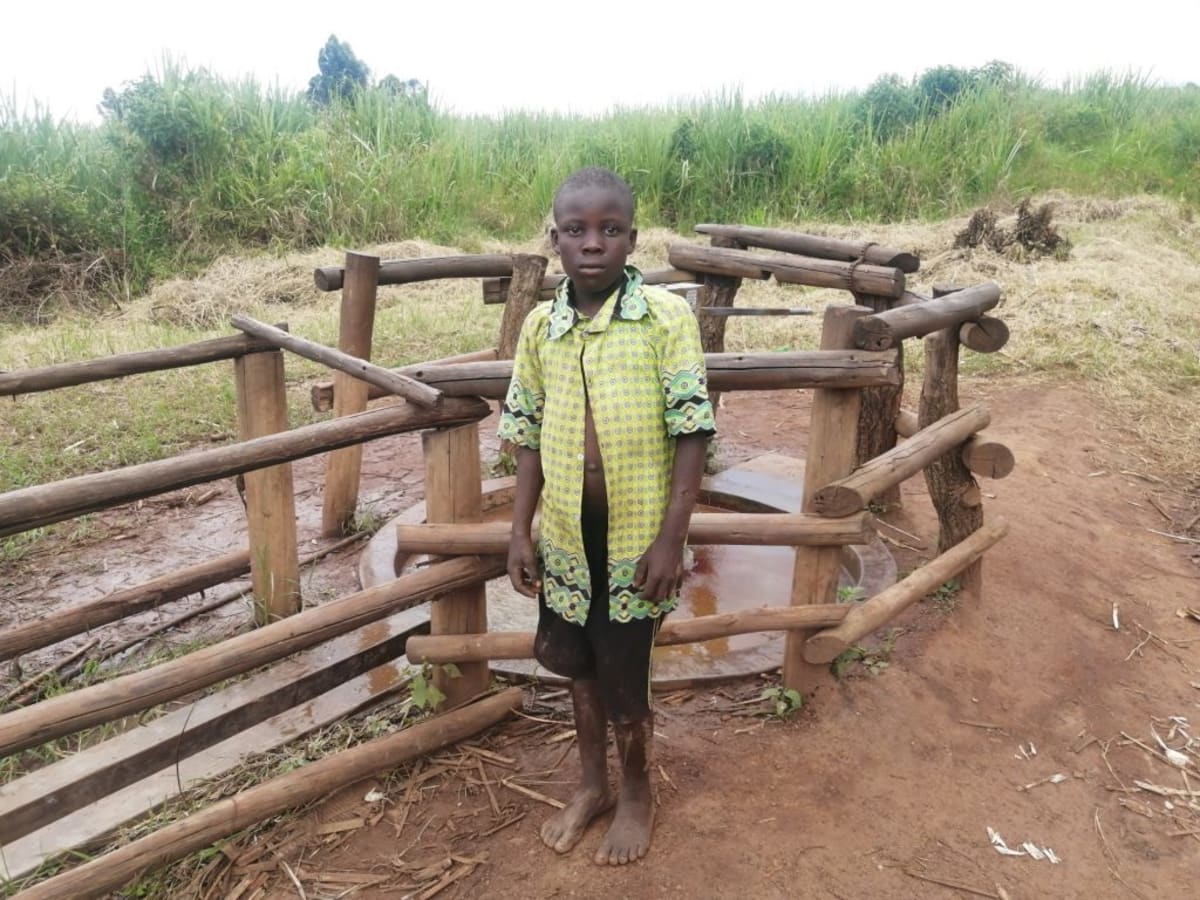This community is one of the newly created villages within Bikonzi Parish. The area is flat with undulating plains and very hot during the dry season. It lacks several services, including safe water, accessible schools, and good roads. The most common livelihood of the people is farming beans, maize, and sugarcane for commercial purposes, along with a few who raise cattle or have shops in the trading centers.
The primary water source, a borehole at the school, is currently broken and nonfunctional due to worn-out pump parts. Because of the long distances to collect water in the next village, this community often resorts to a contaminated open water source for domestic activities such as cooking, bathing, and washing clothes. Sometimes, the children drink this water when they have no alternative. During heavy rain accessing the water source is hard, especially for children, since it becomes very slippery. All the runoff uphill directs itself into the water, making it very dirty. Rehabilitation of the water point is critical to restore a safe water supply to this community and reduce diseases related to drinking unclean water.

"It's not easy for children to collect water in this village except during the rainy season when we harvest water from the roof. Most times, I am stopped by my mother due to the long distance I have to walk to collect water and also the high risks of accidents due to speeding motorcycles and bicycles along the way to the source. I will be happy when more boreholes are constructed in this village to enable us to have access to clean and safe water," Susan said.

When one of the community members was asked how the water crisis impacts the community, he said, "In this village, the biggest challenge we have is water. We are very unfortunate in this village because ever since this borehole broke down about two years ago, no one cares about us. The government has even failed to provide us a school where to take our children. As a community, we constructed a community school nearer to this borehole so that our children can access water while at school, but ever since the borehole broke down, some children ended up dropping out of school."
Here’s what we’re going to do about it:
Rehabilitated Well
We are going to restore water to the broken-down borehole. This water point is located at the center of the village and easily accessible by most people, unlike the springs, which are located at the far ends of the village. When this borehole is restored to its original status, it will provide the community with easy access to clean and safe water. We will remove the old pump, clear out the well, reinstall a new stainless steel pump, and build a new well pad to protect the water.
Training
Training’s main objectives are the use of latrines and observing proper hygiene practices since these goals are inherently connected to the provision of clean water. Open defecation, water storage in unclean containers, and the absence of handwashing are all possible contaminants of a household water supply. Each participating village must achieve Open Defecation Free status (defined by one latrine per household) before the pump installation for a shallow hand-dug well.
This social program includes the assignment of 1 Community Development Officer (CDO) to each village. The CDO encourages each household to build an ideal homestead that consists of a latrine, handwashing facility, a separate structure for animals, a rubbish pit, and a drying rack for dishes.
We also implement the Community-Led Total Sanitation (CLTS) approach with each of our village partners. This aims to improve the sanitation and hygiene practices and behaviors of a village. During these sessions, village leaders naturally emerge and push the community to realize that the current patterns of individual households – particularly the practice of open defecation – are unhealthy and affect the entire village. CLTS facilitates a process in which community members realize the negative consequences of their current water, sanitation, and hygiene behaviors and are inspired to take action. Group interactions are frequent motivators for individual households to build latrines, use the latrines, and demand that other families do the same.
Improved Sanitation
The aim is that all households own an improved latrine. Many families do not use a toilet but use the bush. Due to open defecation, feces are spread all over the village. This leads to waterborne diseases and contamination of groundwater and surface water. Our aim is that the community can live a healthy life free of preventable diseases. We endeavor that people will have both access to sustainable, clean water and access to sanitation at the end of our presence in the community. We have now organized families to form digging groups for latrine construction and empowered them with the tools they will need.

 Borehole Well and Hand Pump
Borehole Well and Hand Pump































